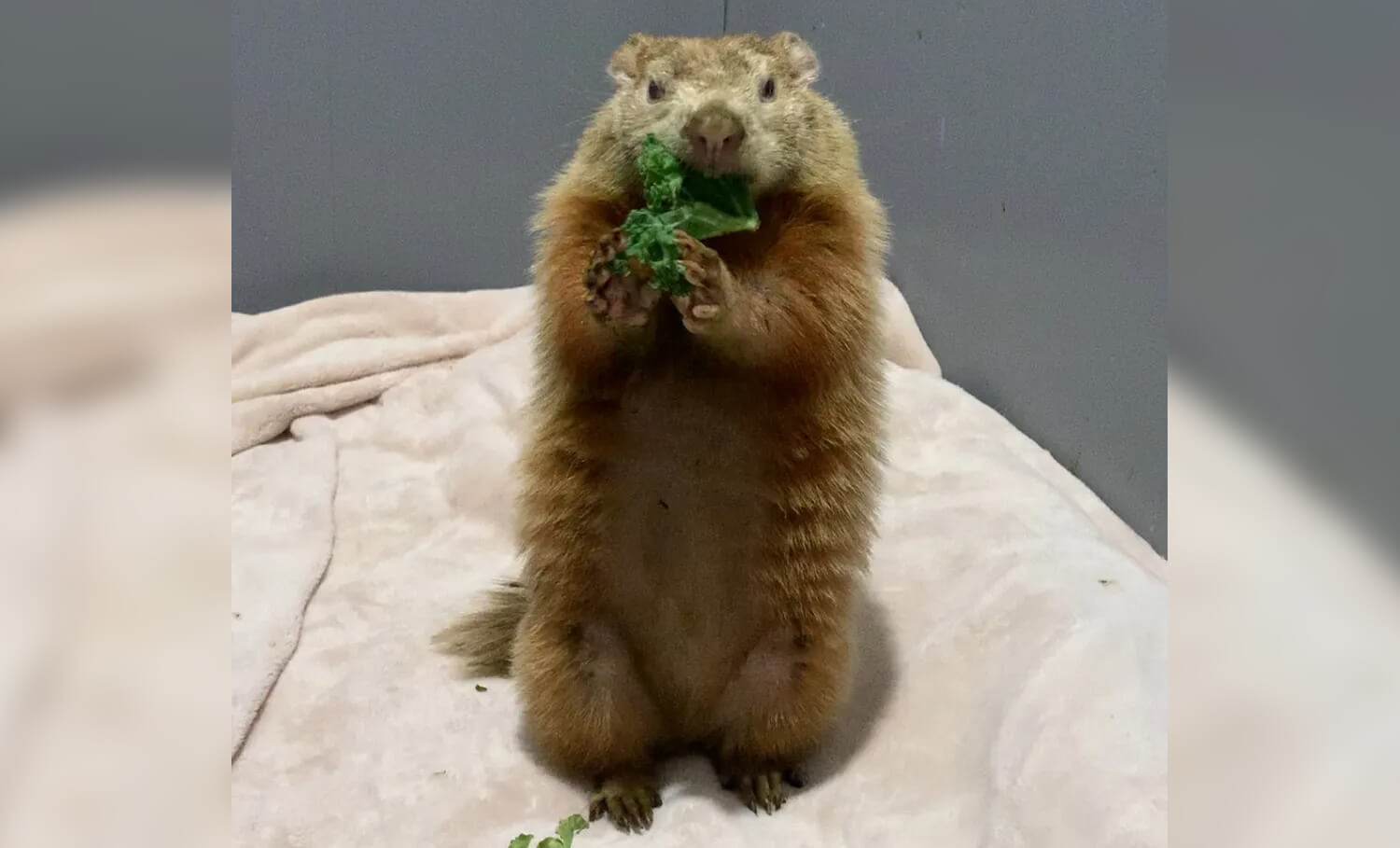Debbie the Blonde Groundhog Makes Her Recovery at Evelyn Alexander Wildlife Center

While the Evelyn Alexander Wildlife Rescue Center (EAWRC) has seen its fair share of unique wildlife patients, Debbie, the blonde groundhog, stands out as one of the most fascinating. Found on December 13, 2024, on 130 Patchogue-Yaphank Road in East Patchogue, Debbie was discovered in a detrimental state. Covered in feces, severely underweight, and displaying unusual behavior for a hibernator during winter, she was immediately rushed in for treatment by wildlife rescuers.
Named after the blonde, lead singer of the rock band Blondie by EAWRC animal care assistant Grace DeNatale, Debbie’s striking appearance is due to a leucistic mutation, which is a rare genetic condition that causes partial loss of pigmentation, giving her a pale blonde coat, rather than the pure white of an albino nor the brown of a classic groundhog.
“Albinos are fully white, typically with red eyes,” Kathleen Mulcahy, executive director of the EAWRC, explains. “Leucistic animals, like Debbie, retain some coloration, which gives her that unique blonde color.”
When Debbie first arrived at the center, her condition was alarming to wildlife rehabilitator Alexa Mack.
“She suffered from mange — a skin infection caused by mites — along with severe parasitic infections like roundworm and coccidia,” Mack explains. “She was so dirty and covered in feces that Jess (Jessica Chiarello, senior animal care technician and hospital supervisor) and I had to give her a bath just to help her start grooming herself again.”
Debbie’s symptoms, including head tilting and circling behavior, pointed to neurological effects caused by coccidia, alongside her severe weight loss and raw, scaly skin.
“We knew something was wrong because groundhogs only wake up early from hibernation under serious circumstances, often they’re sick,” Grace DeNatal explains. “As one of the only true hibernators on Long Island, it’s rare to see one active at this time of year unless something’s wrong.”
EAWRC employees immediately started treatment for Debbie. To fight the mites, diatomaceous earth, a powdered substance made from ground insects and seashell fossils, provides a strong form of calcium and was used to suffocate the mites causing her mange. She also received doses of ivermectin, a versatile dewormer effective against internal and external parasites, and toltrazuril to combat the intestinal coccidia infection.
After the treatment, “She started eating a lot and regained over 1 kilogram, only showing how skinny she was before,” DeNatale explains. “Now shes so much healthier, and she’s still pretty small since she’s on the younger side, but she’s feisty and will do well in the wild after her recovery.”
Because groundhogs are territorial and establish their dens well before winter, the EAWRC plans to release Debbie in the spring when the ground thaws. She will be returned to the area where she was found, in East Patchogue, since relocating groundhogs can disrupt their ability to build a den in time for the next season.
With Groundhog Day having recently passed on February 2, the EAWRC once again hosted their annual Groundhog Day event with Allen McButterpants, the EAWRC’s most famous animal educational ambassador, who did not see his shadowe and therefore determined that spring will come early this year. In addition to McButterpants’ prediction, the event included appearances from the EAWRC’s ambassador animals, storytime, free stickers and even a taco truck from Mattitaco offering hot chocolate, coffee and their delicious tacos, Mulcahy says. Visitors also had the chance to snap a photo with Allen after the day’s proclamation.
The Evelyn Alexander Wildlife Rescue Center is located at 228 West Montauk Highway, Hampton Bays. It can be reached at 631-728-4200, and animal emergencies can be reported at 631-728-WILD (9453). The center is open 9 a.m.–5 p.m. seven days a week. Visit wildliferescuecenter.org for more information.



